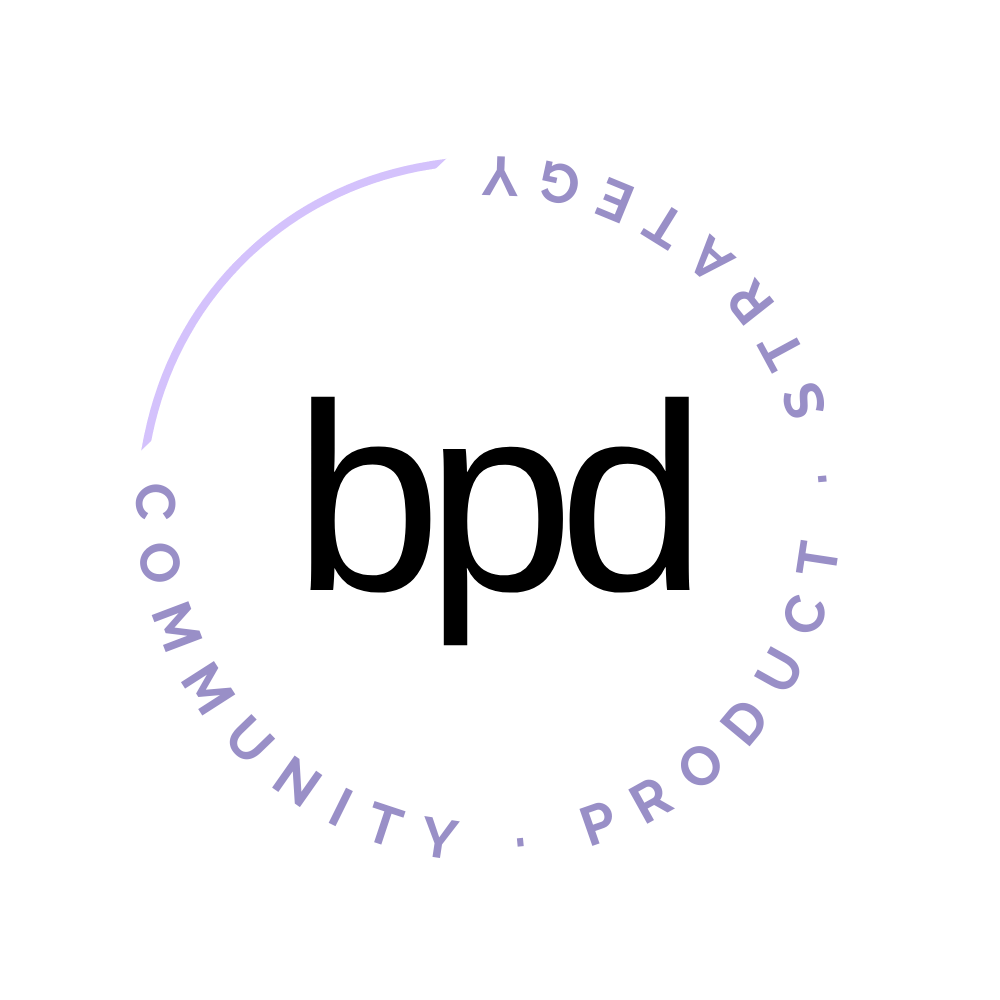#35 Are You Creating An Overwhelm Problem?
Most of the membership audits I do for clients expose an overwhelm problem.
Your customer is seeking support in getting from point A to be point B – whatever transformation you serve.
The reason that Google doesn’t solve their problem is because the answers are overwhelming, don’t provide a step-by-step answer, and don’t offer community support along the way. And so instead of researching, they’ve come to you, dear community builder.
But for some reason our natural inclination when we create a membership offer is to give away the house. We put on our Oprah hats and handout every bonus we can possibly think of.
Digital Excess and Waste
Instead of feeling held and served, our members feel overwhelmed.
We try to overwhelm them with resources and content so that they don’t leave (it would take ages to get through all this content!) …but this approach backfires.
It’s more important to focus on serving them at every moment they hit a step in their journey that they consider giving up than it is to have mountains of content for them to sift through.
Overwhelm feels paralyzing. The only thing to do when you feel overwhelmed in life to keep moving is to take things one step at a time. You have to create that step by step roadmap for your community member so that their experience doesn’t end up looking like this...
3 Ways To Reduce Overwhelm
(01) Create Opportunities For Connection During Onboarding
Onboarding is crucial to make sure that your members feel belonging and know exactly what to do next so that they are met with peace and joy, versus anxiety and overwhelm.
Try it:
If possible, offer 1:1s with new members — there are HUGE benefits for your own business research in doing this, and it helps you build trust and rapport with new members.
If you’re serving a larger community or membership or bringing in a lot of new people at once like in a launch model, a group onboarding session can be super helpful. Start by giving them a tour and reviewing the basics, then open up discussion groups (with prompts) so that members have a chance to meet one another and connect.
You can also consider a matching program to create either cohorts of newbies grouped together or mentor/mentee relationships with alumni + newbies.
(02) Provide Step by Step Roadmap
A huge mistake I see again and again is when we provide a giant library of resources without any direction of where to start. Assume nothing. Your members might not even realize to go in list order – spell it out for them and tell them exactly what to do next.
Try it:
A checklist can be super helpful. We see these a lot with onboarding, for example, create your profile, answer a questionnaire, introduce yourself, etc. But what about beyond that? Can you provide some sort of guide for their first month or first few months of membership? What about a week 1 guide?
If you have the ability in your platform, providing some kind of visual can be super helpful so that they always see where they are and where they’re headed.
Can you help your members understand how long different steps should or could take? People often feel “behind” and it can be the driving force that makes them give up. Remind them that it’s okay to be exactly where they are and put one foot in front of the other.
(03) Personalize The Path
In all the products I’ve helped build, personalization has been a theme of every research sprint I’ve ever done. People want a custom solution built exactly for them and their needs. And isn’t that a fair request? Personalization creates “stickyness” in a product. When people feel something is made for them they keep coming back (+ they tell their friends).
Personalization doesn’t have to be a unique experience for each user but it could be done with really small but meaningful touches.
Try it:
Segment your members in your email marketing platform and customize the emails you send based on their goals, such as a unique onboarding email sequence.
Consider creating some sort of onboarding quiz or assessment that evaluates your members and tells them exactly what they need to focus on next to reach their next milestone.
Label your events and content with labels like “beginner, intermediate or advanced” or whatever makes sense in your industry so that people can self-select where they are and go to sessions that apply to their level. You can even lock those advanced events and content until members test into that level (with caution – this will also create some pushback).
I’ll leave you with this hot take on a Friday afternoon:
As memberships become more successful and grow, they often plateau and retention drops until it all fizzles out… that is because with more sophistication and growth, you need more personalization to create a positive curated experience.
The longer a membership exists, the more content overwhelm a new member will feel. SO you might not have to consider all these things when you’re starting, but you certainly need to think about them as you scale.
If you want my help with your membership, I’d love to do an audit for you. Learn more about my services here.
If you loved this essay, you’ll love my newsletter. Subscribe for free here!

